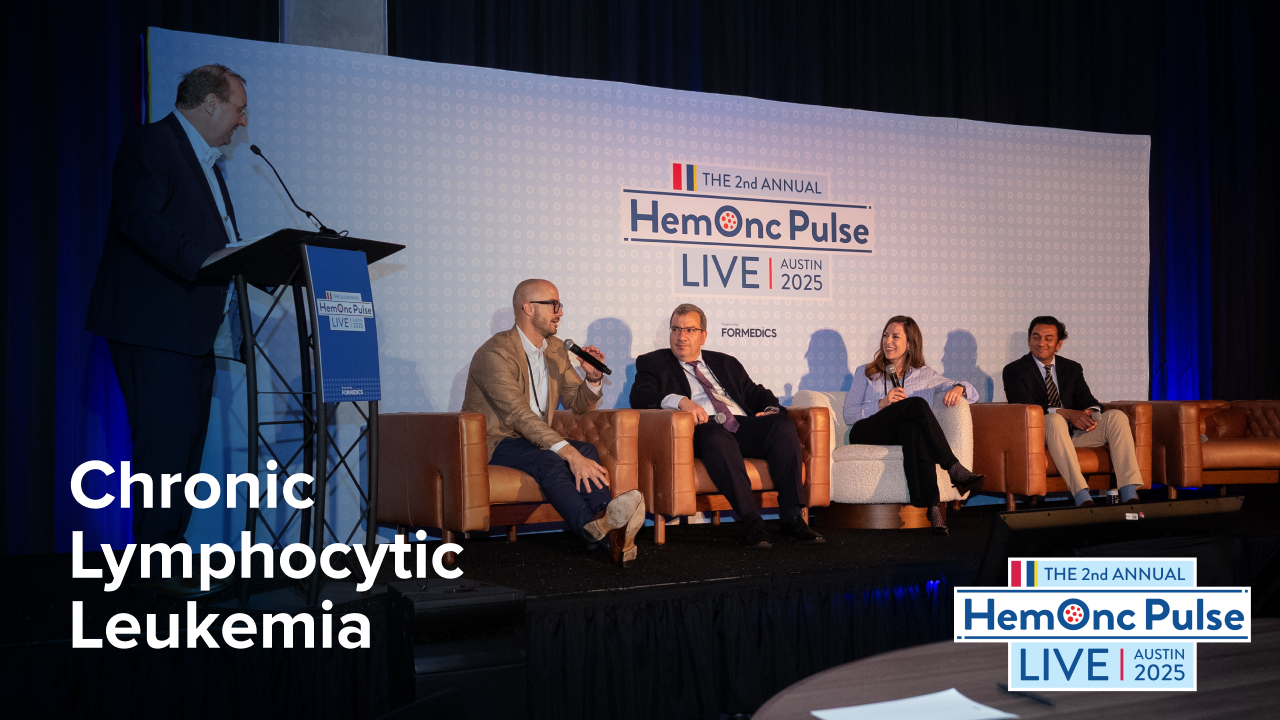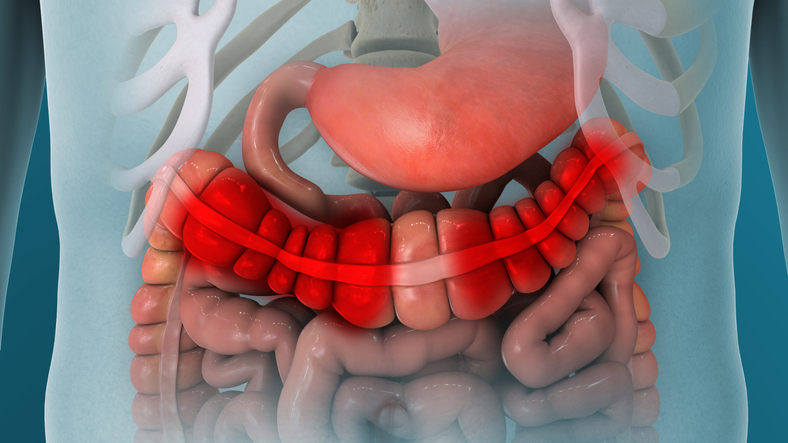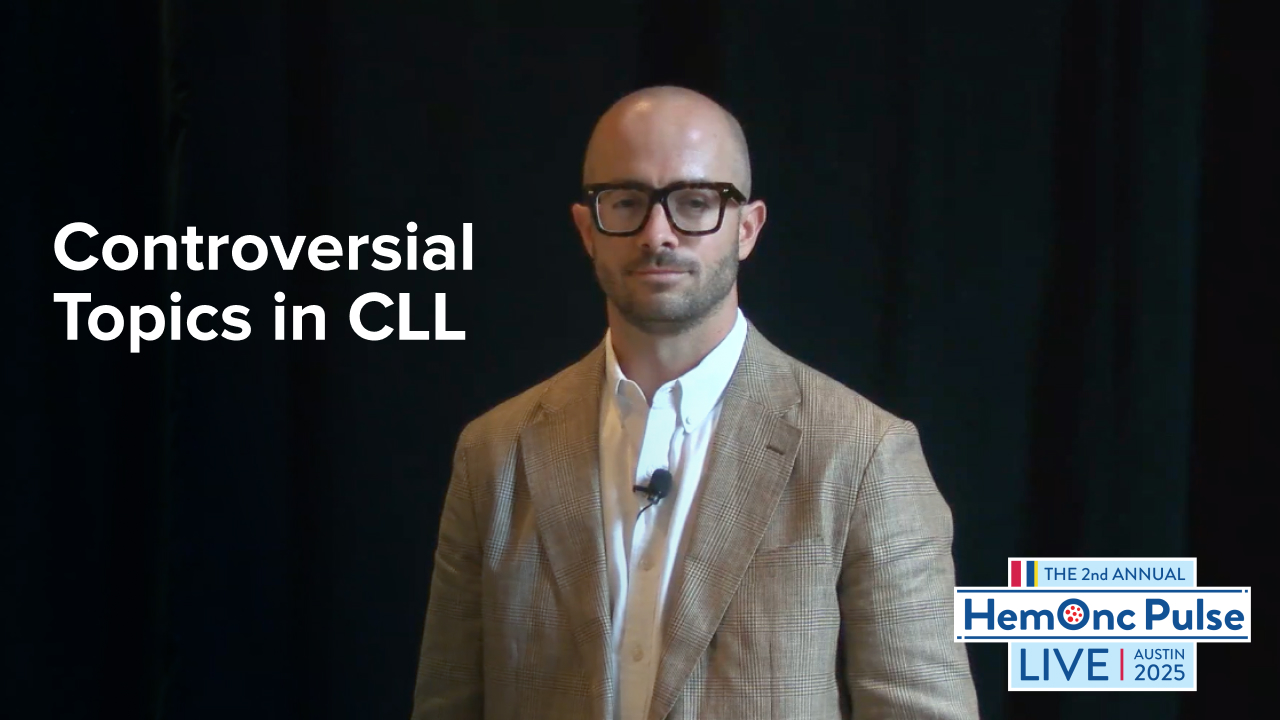
Take-aways:
- The multicenter, phase II OPTIC study is the first to prospectively evaluate a response-based dose-reduction strategy to optimize the benefit-risk of a TKI in patients with CP-CML.
- Patients who received a starting dose of 45 mg had the best response rates, and responses were sustained in patients who had their starting doses reduced from 45 mg or 30 mg to 15 mg.
- The toxicity profile was considered clinically manageable, with arterial occlusive events reported in 3% to 10% of patients.
A response-based dose-reduction strategy for third-generation tyrosine kinase inhibitor (TKI) ponatinib optimized the benefit-to-risk ratio of the drug in mostly resistant patients with chronic-phase chronic myeloid leukemia (CP-CML), particularly when the strategy started ponatinib at a starting dose of 45 mg. These findings from the Optimizing Ponatinib Treatment in CP-CML (OPTIC) trial were presented during the 2021 Society of Hematologic Oncology Annual Meeting by Jorge Cortes, MD, of the Georgia Cancer Center at Augusta University.
The findings presented by Dr. Cortes were from a primary analysis of the ongoing phase II OPTIC trial, which included patients with CP-CML that was either resistant or intolerant to 2 or more TKIs or had the BCR-ABL1 T315I mutation.
Study investigators randomized participants to receive once-daily ponatinib at 3 starting doses:
- 45 mg (cohort A; n, 94)
- 30 mg (cohort B; n, 95)
- 15 mg (cohort C; n, 94)
Per study protocol, if patients in cohorts A or B achieved BCR-ABL1IS levels of 1% or lower, daily doses of ponatinib were reduced to 15 mg. The primary endpoint of BRUIN was achievement of BCR-ABL1IS level of 1% or lower at 12 months. Secondary endpoints included cytogenetic and molecular responses, as well as safety.
At baseline, the median age of the population was 48 years and ranged between 18 and 81 years. Most patients (98%) had received at least 2 TKIs, including 55% who had received 3 or more. Nearly all (99%) patients had resistant disease, and 40% had at least 1 mutation at baseline. Approximately 23% had T315I at the baseline assessment.
Nearly half (47%) of patients were still on treatment at the median follow-up of 32 months, and 72% of patients had ponatinib exposure that lasted 12 months or longer. At the 12-month mark, a greater proportion of patients in cohort A achieved the primary endpoint (44% vs. 29% for cohort B and 23% for cohort C). Given these findings, the investigators noted that cohort A met the primary endpoint for the study.
Greater proportions of patients in the 45 mg starting dose group also achieved BCR-ABL1IS levels of 1% or below by 6 months, 12 months, and 24 months compared with the other 2 dosing cohorts. In the 30 mg and 45 mg cohorts combined, a total of 73 patients had their doses reduced to 15 mg following achievement of BCR-ABL1IS levels of 1% or lower. In these patients, 75% had maintained response after the dose reduction, and 93% of those patients continued to maintain response for at least 6 months.
At 36 months, the progression-free survival rates were 73% for cohort A, 66% for cohort B, and 70% for cohort C. Additionally, the 36-month overall survival rates were 89% each for cohorts A and B and 92% for cohort C.
Regarding safety, the most frequently reported grade 3 or higher treatment-emergent adverse events (TEAEs) included thrombocytopenia (27%), neutropenia (17%), and anemia (7%). Arterial occlusive events (AOEs) were reported in 10%, 5%, and 3% of patients in cohorts A, B, and C, respectively. The rates of serious AEOs were 4% each in cohorts A and B and 3% in cohort C. Dose reductions due to TEAEs occurred in 46%, 35%, and 32% in cohorts A, B, and C, respectively. In addition, discontinuations for TEAEs were reported in 19%, 16%, and 14% of patients.
“Responses were associated with robust survival outcomes in patients with CP-CML resistant to second-generation BCR-ABL1 TKI therapy, both with and without BCR-ABL1 mutations,” the authors concluded.
Disclosures: This research was supported by ARIAD Pharmaceuticals, a subsidiary of Takeda. Study authors report financial relationships with Takeda, the manufacturer of ponatinib.
Reference
Cortes JE, Apperley JF, Lomaia E, et al. OPTIC primary analysis: a dose-optimization study of 3 starting doses of ponatinib (PON). Abstract #CML-129. Presented at the 2021 Society of Hematologic Oncology Annual Meeting, September 8-11, 2021.






 © 2025 Mashup Media, LLC, a Formedics Property. All Rights Reserved.
© 2025 Mashup Media, LLC, a Formedics Property. All Rights Reserved.